Cervical stitch (cerclage) for preventing preterm birth in singleton pregnancy
- PMID: 28586127
- PMCID: PMC6481522
- DOI: 10.1002/14651858.CD008991.pub3
Cervical stitch (cerclage) for preventing preterm birth in singleton pregnancy
Abstract
Background: Cervical cerclage is a well-known surgical procedure carried out during pregnancy. It involves positioning of a suture (stitch) around the neck of the womb (cervix), aiming to give mechanical support to the cervix and thereby reduce risk of preterm birth. The effectiveness and safety of this procedure remains controversial. This is an update of a review last published in 2012.
Objectives: To assess whether the use of cervical stitch in singleton pregnancy at high risk of pregnancy loss based on woman's history and/or ultrasound finding of 'short cervix' and/or physical exam improves subsequent obstetric care and fetal outcome.
Search methods: We searched Cochrane Pregnancy and Childbirth's Trials Register (30 June 2016) and reference lists of identified studies.
Selection criteria: We included all randomised trials of cervical suturing in singleton pregnancies. Cervical stitch was carried out when the pregnancy was considered to be of sufficiently high risk due to a woman's history, a finding of short cervix on ultrasound or other indication determined by physical exam. We included any study that compared cerclage with either no treatment or any alternative intervention. We planned to include cluster-randomised studies but not cross-over trials. We excluded quasi-randomised studies. We included studies reported in abstract form only.
Data collection and analysis: Three review authors independently assessed trials for inclusion. Two review authors independently assessed risk of bias and extracted data. We resolved discrepancies by discussion. Data were checked for accuracy. The quality of the evidence was assessed using the GRADE approach.
Main results: This updated review includes a total of 15 trials (3490 women); three trials were added for this update (152 women). Cerclage versus no cerclageOverall, cerclage probably leads to a reduced risk of perinatal death when compared with no cerclage, although the confidence interval (CI) crosses the line of no effect (RR 0.82, 95% CI 0.65 to 1.04; 10 studies, 2927 women; moderate quality evidence). Considering stillbirths and neonatal deaths separately reduced the numbers of events and sample size. Although the relative effect of cerclage is similar, estimates were less reliable with fewer data and assessed as of low quality (stillbirths RR 0.89, 95% CI 0.45 to 1.75; 5 studies, 1803 women; low quality evidence; neonatal deaths before discharge RR 0.85, 95% CI 0.53 to 1.39; 6 studies, 1714 women; low quality evidence). Serious neonatal morbidity was similar with and without cerclage (RR 0.80, 95% CI 0.55 to 1.18; 6 studies, 883 women; low-quality evidence). Pregnant women with and without cerclage were equally likely to have a baby discharged home healthy (RR 1.02, 95% CI 0.97 to 1.06; 4 studies, 657 women; moderate quality evidence).Pregnant women with cerclage were less likely to have preterm births compared to controls before 37, 34 (average RR 0.77, 95% CI 0.66 to 0.89; 9 studies, 2415 women; high quality evidence) and 28 completed weeks of gestation.Five subgroups based on clinical indication provided data for analysis (history-indicated; short cervix based on one-off ultrasound in high risk women; short cervix found by serial scans in high risk women; physical exam-indicated; and short cervix found on scan in low risk or mixed populations). There were too few trials in these clinical subgroups to make meaningful conclusions and no evidence of differential effects. Cerclage versus progestogens Two trials (129 women) compared cerclage to prevention with vaginal progesterone in high risk women with short cervix on ultrasound; these trials were too small to detect reliable, clinically important differences for any review outcome. One included trial compared cerclage with intramuscular 17α‐hydroxiprogestrone caproate (17 OHPC) which lacked power to detect group differences. History indicated cerclage versus ultrasound indicated cerclage Evidence from two trials (344 women) was too limited to establish differences for clinically important outcomes.
Authors' conclusions: Cervical cerclage reduces the risk of preterm birth in women at high-risk of preterm birth and probably reduces risk of perinatal deaths. There was no evidence of any differential effect of cerclage based on previous obstetric history or short cervix indications, but data were limited for all clinical groups. The question of whether cerclage is more or less effective than other preventative treatments, particularly vaginal progesterone, remains unanswered.
Conflict of interest statement
Zarko Alfirevic: My employer (University of Liverpool) has received grants from UK National Institute of Health Research, Wellbeing of Women charity and Perkin Elmer to support my research group's work related to preterm birth prevention and my Cochrane editorial work.
Tamara Stampalija: none known.
Nancy Medley: Nancy Medley's work was financially supported by the University of Liverpool's Harris‐Wellbeing of Women Preterm Birth Centre research award.
Figures



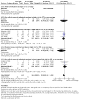


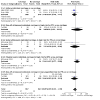

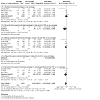




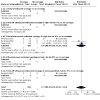

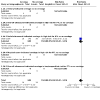
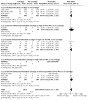
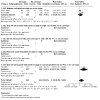

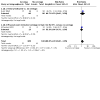

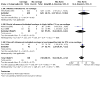















































































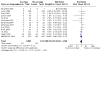




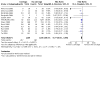
Update of
-
Cervical stitch (cerclage) for preventing preterm birth in singleton pregnancy.Cochrane Database Syst Rev. 2012 Apr 18;(4):CD008991. doi: 10.1002/14651858.CD008991.pub2. Cochrane Database Syst Rev. 2012. Update in: Cochrane Database Syst Rev. 2017 Jun 06;6:CD008991. doi: 10.1002/14651858.CD008991.pub3. PMID: 22513970 Updated.
References
References to studies included in this review
Althuisius 2001 {published data only}
-
- Althuisius S, Dekker G, Hummel P, Bedekam D, Kuik D, Van Geijn H. Cervical incompetence prevention randomized cerclage trial (CIPRACT): effect of therapeutic cerclage with bed rest vs. bed rest only on cervical length. Ultrasound in Obstetrics and Gynecology 2002;20(2):163-7. - PubMed
-
- Althuisius S, Dekker G, Hummel P, Bekedam D, Van Geijn H. CIPRACT (cervical incompetence prevention randomized cerclage trial): final results [abstract]. American Journal of Obstetrics and Gynecology 2001;184(1):S2. - PubMed
-
- Althuisius SM, Dekker GA, Hummel P, Bekedam DJ, Van Geijn HP. Final results of the cervical incompetence prevention randomized cerclage trial (CIPRACT): therapeutic cerclage versus bedrest alone. American Journal of Obstetrics and Gynecology 2001;185(5):1106-12. - PubMed
-
- Althuisius SM, Dekker GA, Van Geijn HP, Bekedam DJ, Hummel P. Cervical incompetence prevention randomized cerclage trial, preliminary results. American Journal of Obstetrics and Gynecology 2000;182(1 Pt 2):S20. - PubMed
-
- Althuisius SM, Dekker GA, Geijn HP, Bekedam DJ, Hummel P. Cervical incompetence prevention randomized cerclage trial (CIPRACT): study design and preliminary results. American Journal of Obstetrics and Gynecology 2000;183(4):823-9. - PubMed
Althuisius 2003 {published data only}
-
- Althuisius S, Dekker G, Hummel P, Van Geijn H. Cervical incompetence prevention randomized cerclage trial (CIPRACT): emergency cerclage with bed rest versus bed rest alone. American Journal of Obstetrics and Gynecology 2002;187(6 Pt 2):S86. - PubMed
-
- Althuisius SM, Dekker GA, Hummel P, Geijn HPV. Cervical incompetence prevention randomized cerclage trial: emergency cerclage with bed rest versus bed rest alone. American Journal of Obstetrics and Gynecology 2003;189(4):907-10. - PubMed
Beigi 2005 {published data only}
-
- Beigi A, Zarrinkoub F. Elective versus ultrasound-indicated cervical cerclage in women at risk for cervical incompetence. Medical Journal of the Islamic Republic of Iran 2005;19(2):103-7.
Berghella 2004 {published data only}
-
- Berghella V, Odibo A, Tolosa J. Cerclage for prevention of preterm birth with a short cervix on transvaginal ultrasound: a randomized trial [abstract]. American Journal of Obstetrics and Gynecology 2003;189(6 Suppl 1):S167. - PubMed
-
- Berghella V, Odibo AO, Tolosa JE. Cerclage for prevention of preterm birth in women with a short cervix found on transvaginal ultrasound examination: a randomized trial. American Journal of Obstetrics and Gynecology 2004;191(4):1311-7. - PubMed
Chandiramani 2010 {published data only}
-
- Abbott D, Chin-Smith E, Seed P, Chandiramani M, Shennan A, Tribe R. Relationship between cervical-vaginal fluid elafin concentrations and subsequent cervical shortening in women at high risk of spontaneous preterm birth. Reproductive Sciences 2012;19(3 Suppl):73A.
-
- Chandiramani M, Seed P, Shennan AH, Tribe R. Association between cervicovaginal cytokines and fetal fibronectin in women at risk of spontaneous preterm labour. Archives of Disease in Childhood: Fetal & Neonatal Edition 2011;96(Suppl 1):Fa123-4.
-
- Chandiramani M, Seed PT, Bennett PR, Shennan AH, Tribe RM. Serum progesterone concentrations in women with a previous preterm birth treated with vaginal progesterone supplementation. Reproductive Sciences 2012;19(3 Suppl):189A.
-
- Chandiramani M, Seed PT, Ekbote UV, Orsi NM, Bennett PR, Shennan AH, et al. CLIC: a longitudinal study of inflammatory markers and cervical change in women at risk of spontaneous preterm labour. Archives of Disease in Childhood: Fetal & Neonatal Edition 2010;95(Suppl 1):Fa10.
Ezechi 2004 {published data only}
-
- Ezechi OC, Kalu BKE, Nwokoro CA. Prophylactic cerclage for the prevention of preterm delivery. International Journal of Gynaecology and Obstetrics 2004;85(3):283-4. - PubMed
Ionescu 2012 {published data only}
-
- Ionescu AC, Gheorghiu D, Pacu I, Davitoiu B, Dimitriu M, Haradja H. Randomized trial of cerclage and progesterone to prevent spontaneous preterm birth in high-risk women with a short cervix. Journal of Perinatal Medicine 2012;39(Suppl):Abstract 008.
Keeler 2009 {published data only}
-
- Keeler SM, Kiefer D, Rochon M, Quinones JN, Novetsky AP, Rust O. A randomized trial of cerclage vs. 17 alpha-hydroxyprogesterone caproate for treatment of short cervix. Journal of Perinatal Medicine 2009;37(5):473-9. - PubMed
Lazar 1984 {published data only}
-
- Lazar P, Gueguen S, Dreyfus J, Renaud R, Pontonnier G, Papiernik E. Multicentred controlled trial of cervical cerclage in women at moderate risk of preterm delivery. British Journal of Obstetrics and Gynaecology 1984;91(8):731-5. - PubMed
MRC/RCOG 1993 {published data only}
-
- Anonymous. MRC/RCOG randomised trial of cervical cerclage. In: 23rd British Congress of Obstetrics and Gynaecology; 1983 July 12-15; Birmingham, UK. 1983:187.
-
- Anonymous. MRC/RCOG randomised trial of cervical cerclage. In: 24th British Congress of Obstetrics and Gynaecology;1986 April 15-18; Cardiff, UK. 1986:268.
-
- Knight KM, Hackney DN. Re-evaluation of the subgroup analysis from the Royal College of Obstetricians and Gynaecologists randomized controlled trial of cervical cerclage. Journal of Maternal-Fetal & Neonatal Medicine 2012;25(6):864-5. - PubMed
-
- Lampe L [pers comm]. Effectiveness of cervical cerclage before pregnancy [personal communication]. Letter to; National Perinatal Epidemiology Unit, Oxford, UK 16 March 1988.
-
- MRC/RCOG working party on cervical cerclage. Final report of the Medical Research Council/Royal College of Obstetricians and Gynaecologists multicentre randomised trial of cervical cerclage. British Journal of Obstetrics and Gynaecology 1993;100(6):516-23. - PubMed
Owen 2009 {published data only}
-
- Berghella V, Figueroa D, Szychowski JM, Owen J, Hankins GD, Iams JD, et al. 17-alpha-hydroxyprogesterone caproate for the prevention of preterm birth in women with prior preterm birth and a short cervical length. American Journal of Obstetrics and Gynecology 2010;202(4):351.e1-351.e6. [DOI: 10.1016/j.ajog.2010.02.019] - DOI - PMC - PubMed
Rush 1984 {published data only}
-
- Rush RW, Isaacs S, McPherson K, Jones L, Chalmers I, Grant AM. A randomized controlled trial of cervical cerclage in women at high risk of spontaneous preterm delivery. British Journal of Obstetrics and Gynaecology 1984;91(8):724-30. - PubMed
-
- Rush RW, Isaacs S. Prophylactic cervical cerclage and gestational age at delivery. In: 2nd Conference on Priorities in Perinatal Care; 1983; South Africa. 1983:132-7.
Rust 2000 {published data only}
-
- Rust O, Atlas R, Jones K, Benham B, Balducci J. A randomized trial of cerclage vs no cerclage in patients with sonographically detected 2nd trimester premature dilation of the internal os. American Journal of Obstetrics and Gynecology 2000;182(1 Pt 2):Ss13. - PubMed
-
- Rust O, Atlas R, Reed J, Van Gaalen J, Balducci J. Regression analysis of perinatal morbidity for second-trimester sonographic evidence of internal os dilation and shortening of the distal cervix. American Journal of Obstetrics and Gynecology 2001;184(1):S26.
-
- Rust O, Atlas R, Wells M, Kimmel S. Does cerclage location influence perinatal outcome. American Journal of Obstetrics and Gynecology 2001;185(6 Suppl):S111. - PubMed
-
- Rust O, Larkin R, Roberts W, Quinones J, Rochon M, Reed J, et al. A randomized trial of cerclage versus 17-hydroxyprogesterone (17p) for the treatment of short cervix. American Journal of Obstetrics and Gynecology 2006;195(6 Suppl 1):S112.
-
- Rust OA, Atlas RO, Jones KJ, Benham BN, Balducci J. A randomized trial of cerclage versus no cerclage among patients with ultrasonographically detected second-trimester preterm dilatation of the internal os. American Journal of Obstetrics and Gynecology 2000;183(4):830-5. - PubMed
Simcox 2009 {published data only}
-
- Shennan A, Maternal and Fetal Research Unit (MFRU). CIRCLE study: cerclage in relation to cervical length. www.mfru.org.uk/CIRCLE.htm (accessed 25 February 2004).
-
- Simcox R, Bennett F, Teoh TG, Shennan AH. A randomised controlled trial of cervical scanning vs history to determine cerclage in high risk women (circle trial). Journal of Obstetrics and Gynaecology 2007;27(Suppl 1):S18. - PubMed
-
- Simcox R, Seed PT, Bennett P, Teoh TG, Poston L, Shennan AH. A randomized controlled trial of cervical scanning vs history to determine cerclage in women at high risk of preterm birth (CIRCLE trial). American Journal of Obstetrics and Gynecology 2009;200(6):623.e1-623.e6. - PubMed
To 2004 {published data only}
-
- ISRCTN61066532. Randomised controlled trial of cervical cerclage in women with a short cervix identified by routine sonography at 23 weeks of pregnancy. www.isrctn.com/ISRCTN61066532 (accessed prior to 29 May 2017).
-
- To MS, Alfirevic Z, Heath VCF, Cicero S, Cacho AM, Williamson PR, et al. Cervical cerclage for prevention of preterm delivery in women with short cervix: randomised controlled trial. Lancet 2004;363(9424):1849-53. - PubMed
References to studies excluded from this review
Blair 2002 {published data only}
-
- Blair O, Fletcher H, Kulkarni S. A randomised controlled trial of outpatient versus inpatient cervical cerclage. Journal of Obstetrics and Gynaecology 2002;22(5):493-7. - PubMed
Broumand 2011 {published data only}
Caspi 1990 {published data only}
-
- Caspi E, Schneider DF, Mor Z, Langer R, Weinraub Z, Bukovsky I. Cervical internal os cerclage: description of a new technique and comparison with Shirodkar operation. American Journal of Perinatology 1990;7(4):347-9. - PubMed
Dor 1982 {published data only}
-
- Dor J, Shalev J, Mashiach S, Blankstein J, Serr DM. Elective cervical suture of twin pregnancies diagnosed ultrasonically in the first trimester following induced ovulation. Gynecologic and Obstetric Investigation 1982;13(1):55-60. - PubMed
Hui 2013 {published data only}
-
- Hui SY, Chor CM, Lau TK, Lao TT, Leung TY. Cerclage pessary for preventing preterm birth in women with a singleton pregnancy and a short cervix at 20 to 24 weeks: a randomized controlled trial. American Journal of Perinatology 2013;30(4):283-8. - PubMed
Ismail 2014 {published data only}ISRCTN15373349
-
- ISRCTN15373349. Cerclage suture type for an insufficient cervix and its effect on health outcomes (C-STICH). isrctn.com/ISRCTN15373349 Date first received: 3 December 2014.
Israfil‐Bayli 2014 {published data only}ISRCTN17866773
-
- ISRCTN17866773. Cerclage outcome by the type of suture material (COTS) study. isrctn.com/ISRCTN17866773 (first received 4 February 2013).
Kassanos 2001 {published data only}
-
- Kassanos D, Salamalekis E, Vitoratos N, Panayotopoulos N, Loghis C, Creatsas C. The value of transvaginal ultrasonography in diagnosis and management of cervical incompetence. Clinical and Experimental Obstetrics & Gynecology 2001;28(4):266-8. - PubMed
Nicolaides 2001 {published data only}
-
- Nicolaides K. Randomised controlled trial of cervical cerclage in women with twin pregnancies found to have an asymptomatic short cervix. Current Controlled Trials (www.controlled-trials.com/mrct) (accessed 26 July 2001).
Rust 2001 {published data only}
-
- Rust O, Atlas R, Wells M, Rawlinson K. Cerclage in multiple gestation with midtrimester dilatation of the internal os [abstract]. American Journal of Obstetrics and Gynecology 2001;185(6 Suppl):S111.
Secher 2007 {published data only}
-
- Brix N, Secher N, McCormack C, Helmig R, Hein M, Weber T, et al. Randomised trial of cervical cerclage, with and without occlusion, for the prevention of preterm birth in women suspected for cervical insufficiency. BJOG: an international journal of obstetrics and gynaecology 2013;120(5):613-20. - PubMed
-
- Secher NJ, McCormack CD, Weber T, Hein M, Helmig RB. Cervical occlusion in women with cervical insufficiency: protocol for a randomised, controlled trial with cerclage, with and without cervical occlusion. BJOG: an international journal of obstetrics and gynaecology 2007;114(5):649-e6. - PubMed
Tsai 2009 {published data only}
-
- Tsai YL, Lin YH, Chong KM, Huang LW, Hwang JL, Seow KM. Effectiveness of double cervical cerclage in women with at least one previous pregnancy loss in the second trimester: a randomized controlled trial. Journal of Obstetrics and Gynaecology Research 2009;35(4):666-71. - PubMed
Üçyiğit 2013 {published data only}
-
- Vousden N, Carter J, Üçyiğit A, Shennan A. Risk of infertility following pre-conception abdominal cerclage: evidence from a randomised control. BJOG: an international journal of obstetrics and gynaecology 2015;122(Suppl S2):17.
-
- Üçyiğit A, Hezelgrave N, Shennan A. Risk of infertility and abdominal cerclage: Conception following placement in a randomised controlled trial. BJOG: an international journal of obstetrics and gynaecology 2013;120:189.
Varma 1986 {published data only}
-
- Varma TR [pers comm]. To assess further the value of cervical cerclage in pregnancy [personal communication]. Letter to; National Perinatal Epidemiology Unit, Oxford, UK 13 September 1989.
Von Forster 1986 {published data only}
-
- Von Forster F, During R, Schwarzlos G. Treatment of cervix incompetence - cerclage versus pessary? Zentralblatt für Gynäkologie 1986;108:230-7. - PubMed
Zakhera 2015 {published data only}
-
- Zakhera M. Cervico-isthmic cerclage for the treatment of recurrent bleeding in early pregnancy: a randomized clinical trial. International Journal of Gynecology and Obstetrics 2015;131(Suppl 5):E538.
Zolghadri 2014 {published data only}
-
- Zolghadri J, Younesi M, Asadi N, Khosravi D, Behdin S, Tavana Z, et al. Double versus single cervical cerclage for patients with recurrent pregnancy loss: a randomized clinical trial. Journal of Obstetrics and Gynaecology Research 2014;40(2):375-80. - PubMed
References to studies awaiting assessment
Ragab 2015 {published data only}
-
- Ragab A, Mesbah Y. To do or not to do emergency cervical cerclage (a rescue stitch) at 24-28 weeks gestation in addition to progesterone for patients coming early in labor? A prospective randomized trial for efficacy and safety. Archives of Gynecology and Obstetrics 2015;292(6):1255-60. [PMID: ] - PubMed
References to ongoing studies
Hezelgrave 2015 {published data only}
-
- 2015-000456-15. The prevention of pre-term birth in women who develop a short cervix. A multi-centre randomised controlled trial to compare three treatments; cervical cerclage, cervical pessary and vaginal progesterone. clinicaltrialsregister.eu/2015-000456-15 (first received 11 March 2015).
Koulalli 2014 {published data only}
-
- NTR4415. Pessary or cerclage to prevent preterm birth in women with short cervical length and a history preterm birth. trialregister.nl/trialreg/admin/rctview.asp?TC=4415 (first received 29 January 2014).
Additional references
Anthony 1997
-
- Anthony GS, Walker RG, Cameron AD, Price JL, Walker JJ, Calder AA, et al. Trans-abdominal cervico-isthmic cerclage in the management of cervical incompetence. European Journal of Obstetrics & Gynecology and Reproductive Biology 1997;72:127-30. - PubMed
Arabin 2003
-
- Arabin B, Halbesma JR, Vork F, Hubener M, Van Eyck J. Is treatment with vaginal pessaries an option in patients with a sonographically detected short cervix. Journal of Perinatal Medicine 2003;31:122-33. - PubMed
Berghella 2005
-
- Berghella V, Odibo AO, To MS, Rust OA, Althuisius SM. Cerclage for short cervix on ultrasonography: meta-analysis of trials using individual patients level data. Obstetrics & Gynecology 2005;106:181-9. - PubMed
Berghella 2011a
-
- Berghella V, Rafael TJ, Szychowski JM, Rust OA, Owen J. Cerclage for short cervix on ultrasonography in women with singleton gestation and previous preterm birth. Obstetrics and Gynecology 2011;117(3):663-71. - PubMed
Berghella 2011b
-
- Berghella V, Mackeen AD. Cervical length screening with ultrasound-indicated cerclage compared with history indicated cerclage for prevention of preterm birth. Obstetrics & Gynecology 2011;118(1):148-55. - PubMed
Berry 1995
-
- Berry CW, Brambati B, Eskes TKAB, Exalto N, Fox H, Geraedts JPM, et al. The Euro-Team Early Pregnancy (ETEP) protocol for recurrent miscarriage. Human Reproduction 1995;1(11):1516-20. - PubMed
Chanrachakul 1998
-
- Chanrachakul B, Herabutya Y. Emergency cervical cerclage: Ramathibodi Hospital Experience. Journal of the Medical Association of Thailand 1998;1(11):858-61. - PubMed
Conde‐Agudelo 2013
-
- Conde-Agudelo A, Romero R, Nicolaides K, Chaiworapongsa T, O'Brien JM, Cetingoz E, et al. Vaginal progesterone vs cervical cerclage for the prevention of preterm birth in women with a sonographic short cervix, previous preterm birth, and singleton gestation: a systematic review and indirect comparison meta-analysis. American Journal of Obstetrics and Gynecology 2013;208:42.e1-18. [DOI: 10.1016/j.ajog.2012.10.877] - DOI - PMC - PubMed
Devane 2007
-
- Devane D, Begley CM, Clarke M, Horey D, OBoyle C. Evaluating maternity care: a core set of outcome measures. Birth (Berkeley, Calif.) 2007;34(2):164-72. [PMID: ] - PubMed
Drakeley 1998
-
- Drakeley AJ, Quenby S, Farquharson RG. Mid-trimester loss--appraisal of a screening protocol. Human Reproduction 1998;13(7):1975-80. - PubMed
Ehsanipoor 2015
Fonseca 2007
-
- Fonseca EB, Celik E, Parra M, Singh M, Nicolaides KH, Fetal Medicine Foundation Second Trimester Screening Group. Progesterone and the risk of preterm birth among women with a short cervix. New England Journal of Medicine 2007;357(5):462-9. - PubMed
Gibb 1995
-
- Gibb DMF, Salaria DA. Transabdominal cervicoisthmic cerclage in the management of recurrent second trimester miscarriage and pre-term delivery. British Journal of Obstetrics and Gynaecology 1995;102:802-6. - PubMed
GRADEpro GDT [Computer program]
-
- GRADEpro GDT. Version (accessed prior to 30 May 2017). Hamilton (ON): GRADE Working Group, McMaster University, 2014.
Grant 1989
-
- Grant A. Cervical cerclage to prolong pregnancy. In: Chalmers I, Enkin M, Keirse MJNC, editors(s). Effective Care in Pregnancy and Childbirth. Oxford: Oxford University Press, 1989:633-46.
Hassan 2011
-
- Hassan SS, Romero R, Vidyadhari D, Fusey S, Baxter JK, Khandelwal M, et al. Vaginal progesterone reduces the rate of preterm birth in women with a sonographic short cervix: a multicenter, randomized, double-blind, placebo-controlled trial. Ultrasound in Obstetrics and Gynecology 2011;38(1):18-31. - PMC - PubMed
Higgins 2011
-
- Higgins JPT, Green S, editors. Cochrane Handbook for Systematic Reviews of Interventions Version 5.1.0 [updated March 2011]. The Cochrane Collaboration, 2011. Available from www.cochrane-handbook.org.
Jarde 2016
-
- Jarde A, Lutsiv O, Park C, Gulmezoglu M, Shah P, Biringer A, et al. Progesterone, cervical cerclage and cervical pessary for primary prevention of preterm birth in high risk singleton pregnancies: a systematic review and network meta-analysis. In: American Journal of Obstetrics and Gynecology. Vol. Suppl. 2016:S249. [http://www.ajog.org/article/S0002-9378(15)01798-6/pdf]
Jorgensen 2007
-
- Jorgensen AL, Alfirevic Z, Tudur Smith C, Williamson PR. Cervical stitch (cerclage) for preventing pregnancy loss: individual patient data meta-analysis. BJOG: an international journal of obstetrics and gynaecology 2007;114(12):1460-76. - PubMed
Khalifeh 2016
-
- Khalifeh A, Berghella V. Universal cervical length screening in singleton gestations without a previous preterm birth: ten reasons why it should be implemented. American Journal of Obstetrics and Gynecology 2016;214(5):603.e1-603.e5. - PubMed
McDonald 1957
-
- McDonald IA. Suture of the cervix for inevitable miscarriage. Journal of Obstetrics and Gynaecology of the British Commonwealth 1957;64(3):346-50. - PubMed
McDonald 1980
-
- McDonald IA. Cervical cerclage. Clinical Obstetrics and Gynecology 1980;7(3):461-79. - PubMed
Meis 2003
-
- Meis PJ, Klebanoff M, Thom E, Dombrowski MP, Sibai B, Moawad AH, et al. Prevention of recurrent preterm delivery by 17 alfa-hydroxyprogesterone caproate. New England Journal of Medicine 2003;348:2379-85. - PubMed
Pereira 2007
-
- Pereira L, Cotter A, Gómez R, Berghella V, Prasertcharoensuk W, Rasanen J, et al. Expectant management compared with physical examination-indicated cerclage (EM-PEC) in selected women with a dilated cervix at 14 (0/7) - 25 (6/7) weeks: results from the EM-PEC international cohort study. American Journal of Obstetrics and Gynecology 2007;197(5):483.e1-483.e8. - PubMed
Rafael 2014
RevMan 2014 [Computer program]
-
- Review Manager (RevMan). Version 5.3. Copenhagen: The Nordic Cochrane Centre, The Cochrane Collaboration, 2014.
Riverius 1658
-
- Riverius L, Culpeper N, Cole A. On barrenness. In: The Practice of Physic. London: Peter Cole, 1658.
Romero 2012
-
- Romero R, Nicolaides K, Conde-Agudelo A, Tabor A, O'Brien JM, Cetingoz E, et al. Vaginal progesterone in women with an asymptomatic sonographic short cervix in the midtrimester decreases preterm delivery and neonatal morbidity: a systematic review and meta analysis of individual patient data. American Journal of Obstetrics and Gynecology 2012;206(2):124.e1-124.e19. - PMC - PubMed
Saling 1984
-
- Saling E. Prevention of habitual abortion and prematurity by early total occlusion of the external os uteri. European Journal of Obstetrics, Gynecology, and Reproductive Biology 1984;17(2-3):165-70. - PubMed
Shirodkar 1955
-
- Shirodkar VN. A new method of operative treatment for habitual abortions in the second trimester of pregnancy. Antiseptic 1955;52:299-300.
Suhag 2015
-
- Suhag A, Reina J, Sanapo L, Martinelli P, Saccone G, Simonazzi G, et al. Prior ultrasound-indicated cerclage: comparison of cervical length screening or history-indicated cerclage in the next pregnancy. Obstetrics and Gynecology 2015;126(5):962-8. - PubMed
van 't Hooft 2016
Wong 1993
-
- Wong GP, Farquharson DF, Dansereau J. Emergency cerclage: a retrospective review of 51 cases. American Journal of Perinatology 1993;10(5):341-7. - PubMed
References to other published versions of this review
Alfirevic 2012
Publication types
MeSH terms
Substances
LinkOut - more resources
Full Text Sources
Other Literature Sources

